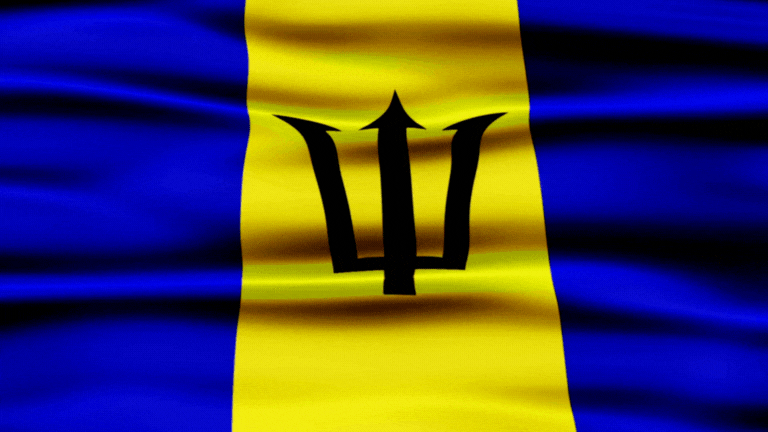Please be aware that this article may contain links to products and services we recommend. If you click on any of these links, we may earn a commission at no extra cost to you. We only endorse products and services that we believe will add value to our readers. Learn more here.
Barbados Flag: History & Symbolism
Hack The Quiz
5/8/20242 min read
This article explores the history and symbolism of the Barbados flag. It outlines the country’s geographical location in the Caribbean and the significance of its flag’s design elements, which represent Barbados’ independence, natural beauty, and the democratic spirit of its people.
Where is Barbados?
Barbados is a small island nation located in the eastern Caribbean, northeast of Venezuela and south of Saint Lucia. Known for its pristine beaches, crystal-clear waters, and rich cultural heritage, Barbados is one of the most popular tourist destinations in the Caribbean.
The island gained its independence from the United Kingdom on November 30, 1966, after over 300 years of British colonial rule. Despite its independence, Barbados remains part of the Commonwealth and maintains close ties with the UK. The national flag, adopted at independence, symbolizes this new beginning and the pride of the Barbadian people.
The History of the Barbados Flag
The flag of Barbados was officially adopted on November 30, 1966, the same day the country gained independence. A national competition was held to design the new flag, and the winning design came from Grantley Prescod, a Barbadian teacher.
The flag’s design was created to reflect the island’s past, present, and future. Its colors and symbols represent not only the island's natural beauty but also the strength and determination of its people. The trident in the middle of the flag, in particular, symbolizes the break from colonial rule and the birth of a new nation.
Since its adoption, the flag has been flown as a symbol of Barbadian pride and independence, and it is widely displayed during national holidays such as Independence Day.
Breaking Down the Barbados Flag’s Design
The Barbados flag features a vertical triband with two blue bands on the sides and a gold band in the center. In the middle of the gold band, there is a black trident. Each element of the flag holds significant meaning.
Let’s break down the elements of the flag:
The Blue Stripes
The two blue vertical stripes on either side of the flag represent the sea that surrounds Barbados. The island is known for its close connection to the ocean, and these stripes reflect the importance of the sea to both its economy and culture.
The Gold Stripe
The gold central stripe symbolizes the golden sands of Barbados’ beaches, which are among its most valuable natural resources. These beaches are crucial to the country’s thriving tourism industry and are a source of national pride.
The Trident
At the center of the flag is a black trident, known as the Broken Trident. The trident’s three prongs represent the three principles of democracy: government of the people, by the people, and for the people. The fact that the trident is broken symbolizes Barbados’ break from British colonial rule and its establishment as an independent nation.
Together, these elements reflect Barbados’ connection to the sea, its natural beauty, and its new identity as an independent, democratic nation.
Final Thoughts
The Barbados flag is a powerful symbol of the island’s independence, its people, and its natural beauty. The broken trident at its center represents the nation’s freedom from colonial rule, while the blue and gold stripes highlight the importance of the sea and the land to Barbados' identity.
Since its adoption in 1966, the flag has become a source of pride for Barbadians, flown during national celebrations and significant events. Each time it’s raised, the flag serves as a reminder of the island’s journey to independence and its place in the Caribbean and the world.
Expand your mind ...
Explore trivia that broadens your understanding and knowledge of the world.
WE ARE HERE FOR YOU
JOIN US and hack the quiz
info@hackthequiz.com
© 2024. All rights reserved.



